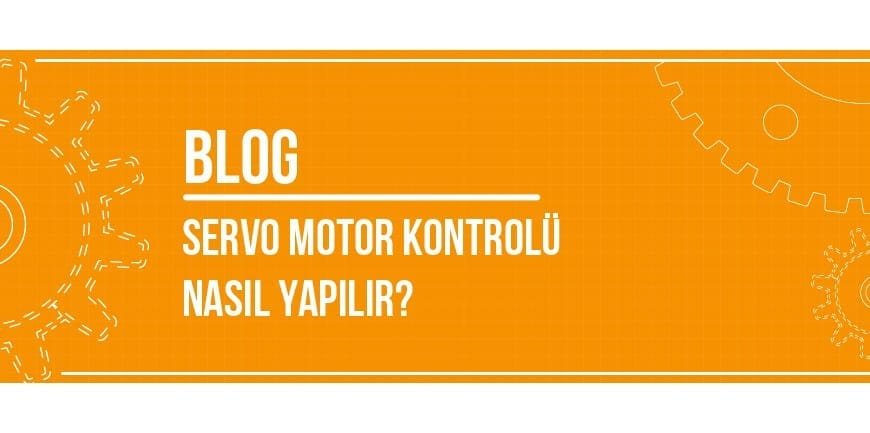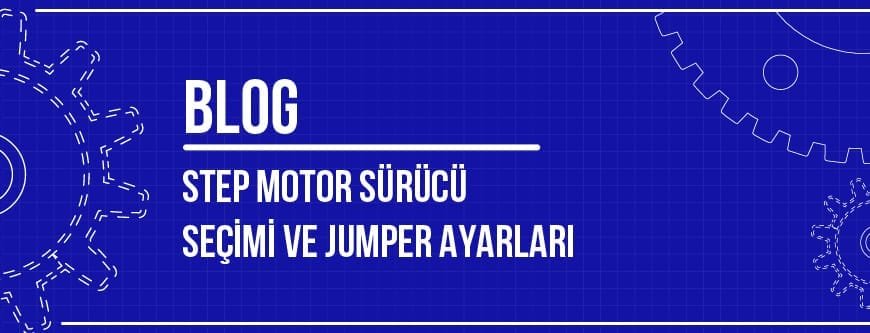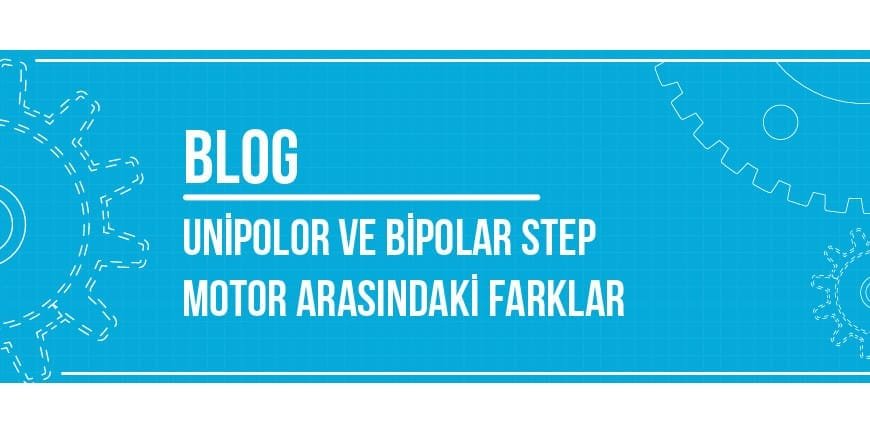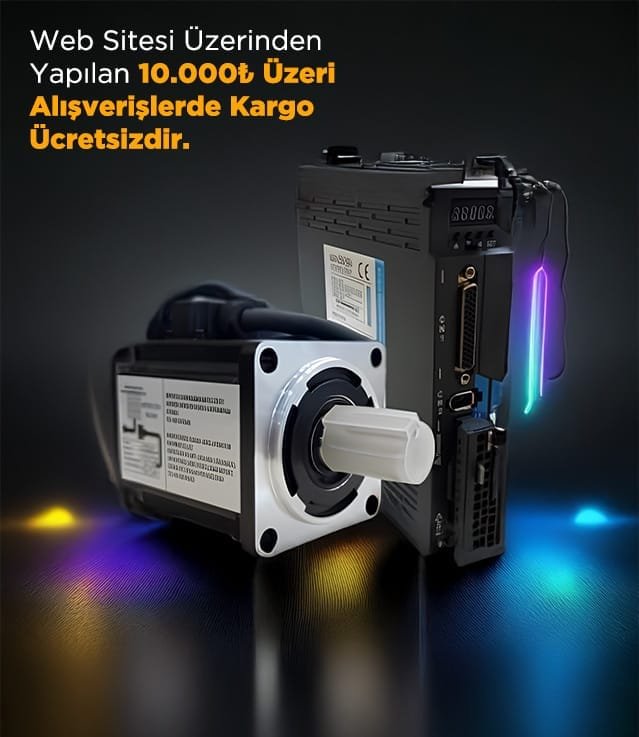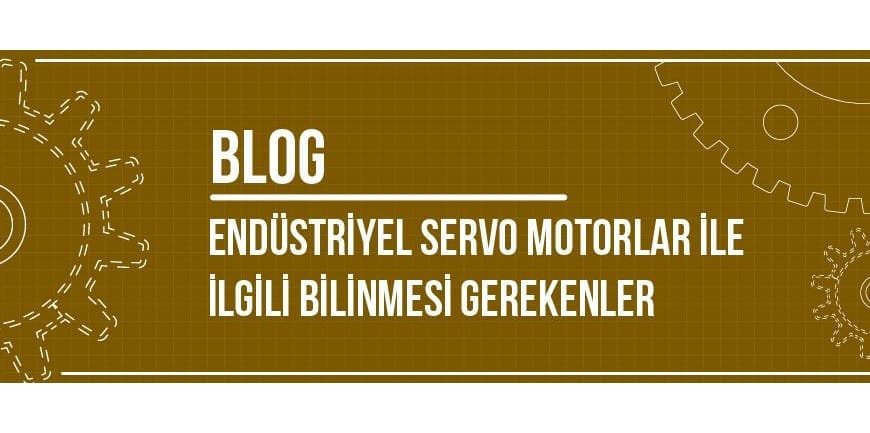
İçindekiler
What You Need to Know About Industrial Servo Motors

As Şahin Rulman, this week’s topic in our weekly blog posts will be industrial servo motors. Throughout the article, we will answer your frequently asked questions such as “What is an industrial servo motor?”, “How is industrial servo motor control achieved?”, and “How much do industrial servo motors cost?”. In addition, we will share the necessary information about the types of industrial servo motors. We hope you find this article useful and wish you a pleasant read.
What is an Industrial Servo Motor?
Industrial servo motors, also known as control motors, are electric motors developed to control the output motion in feedback control systems. They prevent sudden problems that may occur within the system. Thanks to their feedback capability, they also report errors in the system and ensure they are corrected.
Industrial Servo Motor Control
Encoders are located on the shafts of industrial servo motors. These encoders are used to control industrial servo motors. Movement details specified by the user are introduced into the system data via the encoders. The encoders send signal data and provide feedback to process this data and activate the servo motor accordingly. Thus, the user gains full control over industrial servo motors via the encoder.
Types of Industrial Servo Motors
There are various types of industrial servo motors that stand out with different qualities for different purposes. The best choice among these types varies depending on the person and their purpose. Therefore, we will discuss the general characteristics of each type here and try to help you decide which one is best for you. Industrial servo motors are divided into two types:
Industrial AC Servo Motors
They are AC industrial servo motors. They were developed as an alternative to DC industrial servo motors. Indeed, while DC industrial servo motors are used in applications requiring high power, AC industrial servo motors can be used in applications requiring both low and high power. Another prominent feature of these motors is their low inertia levels, aided by their simple structure. They do not exhibit linear characteristics like DC motors. In addition, their torque-speed characteristics are inferior to those of DC motors.
Industrial DC Servo Motors
These types of motors operate on direct current. The name comes from the fact that the motor contains a DC motor. In the early days of industrial servo motors, DC motors were mostly used. The most important components of this type of motor include the DC motor, control circuit, and potentiometer. It has a total movement range of 180 degrees. DC industrial servo motors are also known as brushless motors. This eliminates the need for additional maintenance. On the other hand, it should be noted that DC industrial servo motors also include feedback units.
Where Are Industrial Servo Motors Used?
Industrial servo motors have a wide range of applications. They are used in many small and large-scale applications. Industrial servo motors are particularly important in applications that require high control precision. Robotic systems, CNC machines, medical devices, and production machines are just a few of the dozens of areas where industrial servo motors can be used.
Industrial Servo Motor Control Systems
The most important feature that distinguishes industrial servo motors from other motors is that they are designed to perform a wide range of speed commands. Servo motor drivers complete their work by executing position and speed combination commands received from the user. There are certain key features that a standard-compliant industrial servo motor must have. These include: a servo motor should not lose stability when changing speed ratios and should be able to generate large torques from small force values. It should be able to change its rotational speed quickly during operation. You can achieve high efficiency during your work with a servo motor that complies with standard values.
When we look at the internal structure of servo motors, they consist of a feedback unit and a motor. Industrial servo motors are divided into AC and DC types, and DC servo motors are quite common. However, with the increased ability of transistors to control high currents, we can say that the demand for AC motors has replaced DC motors. In order to transmit speed and position information between the feedback and the motor, the feedback unit must be connected to the motor shaft via an external connection, and the signals sent by the motor must be processed.
In servo motor control systems, the feedback unit and motor are integrated into a single unit. Due to this integrated design, these motors can be considered to have all the necessary hardware for speed and position control. Servo motors can operate without overheating even across a wide speed range and provide the required torque values to maintain balance between load and position.
When operating at full load, servo motors draw 75 kW of power from the motor shaft. Servo motors, which are controlled by electronic systems, come in two different types: brushed and brushless. Brushless servo motors feature stationary coils and rotating magnetic fields, while brushed servo motors have rotating magnetic fields and stationary coils.
Things to Consider When Choosing an Industrial Servo Motor
When selecting an industrial servo motor for your applications that require high motion sensitivity, you must first decide which type is suitable for your field of work. Subsequently, it is beneficial to compare the features of the motor types in the category that is suitable for you. Ultimately, you should choose the product that is most suitable for you in terms of price-benefit balance. The key features of industrial servo motors that require specific attention can be listed as follows:
• Motor torque
• Motor power level
• Average revolutions per minute
• Motor flange size
• Whether the price level is reasonable based on the features
Factors Affecting Industrial Servo Motor Efficiency
After selecting the right industrial servo motor for your business, this section will explain what you need to do to increase the efficiency of the industrial servo motor model you will be using. In industrial applications where servo motors are used, work must proceed in a serial and uninterrupted manner. Since the desired operating capacity and application models vary from project to project, the selection of the technical specifications of the industrial servo motor is the first factor that affects the efficiency you will achieve. The technical specifications of the servo motor, such as power, torque, speed, and flange dimensions, vary. Power selection must be made considering the speed requirements and performance of your project or the area where you will use the industrial servo motor. Servo motors powered by electricity have a minimum power of 400 watts and a maximum power of up to 5500 watts.
To achieve the desired efficiency from a servo motor, you must consider the load demand value, motor deviation values, and lifting/lowering ranges. If you choose an industrial servo motor model with a low value for a project requiring high operating capacity, this will cause the motor to overheat during operation and reduce the efficiency achieved. It will also affect the speed of the operation. After selecting the technical specifications of the servo motor, it is necessary to select the appropriate servo motor driver. Operations and adjustments are performed with the servo motor driver that is suitable for the model and brand of the motor.
Factors Affecting the Prices of Industrial Servo Motors
There are many factors that affect the prices of industrial servo motors. These include factors such as torque, speed, flange, and power values. If you would like to review the industrial servo motor price list, you can click on the relevant link.
We have come to the end of our blog post providing general information about industrial servo motors and their types. If you have any questions on the subject, please feel free to contact us at 0212 576 04 06. You can also view the types of industrial servo motors via the link above.
Diğer Blog Yazılarımız



